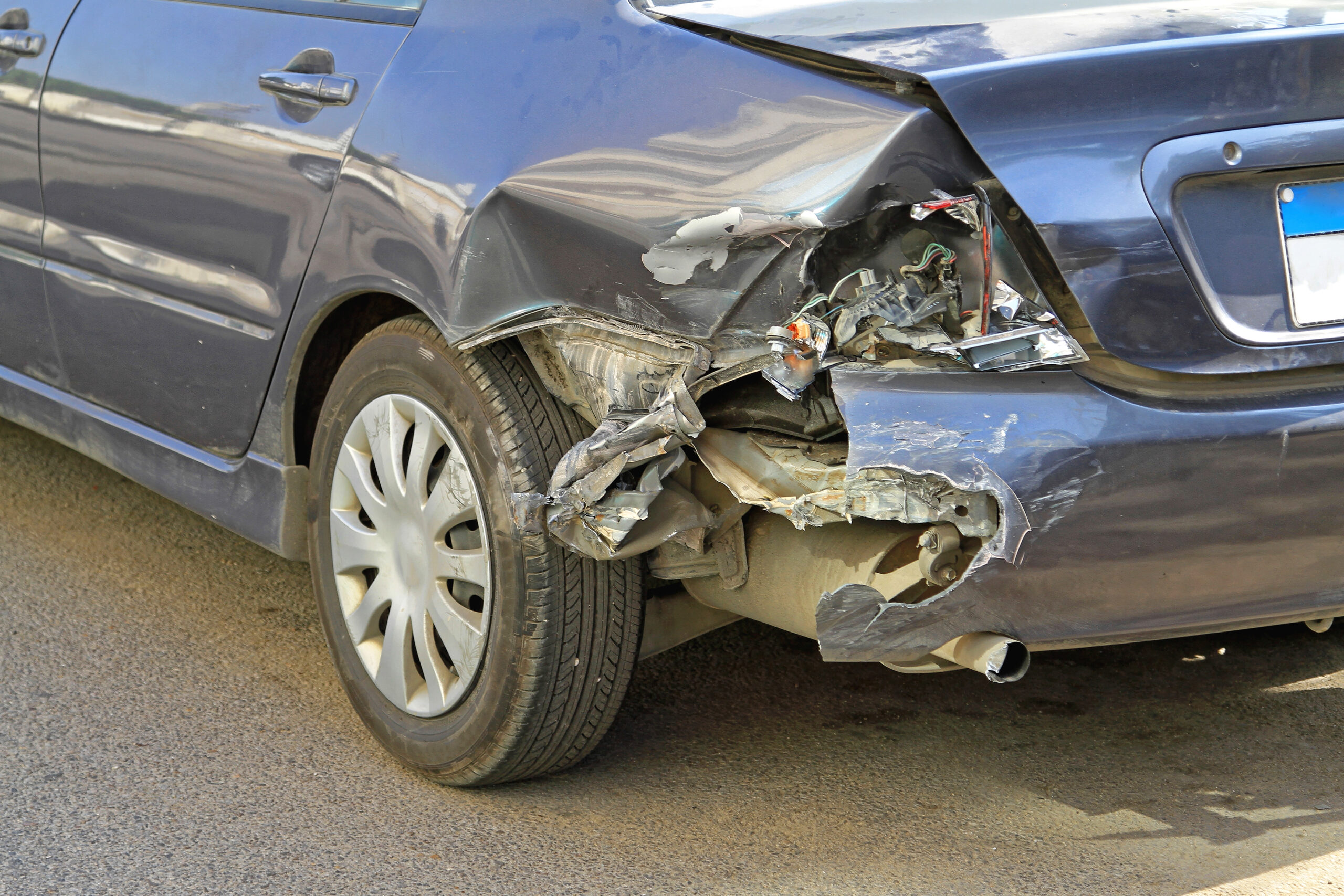
- Vaughn A. Wamsley
- Car Accidents
A sudden jolt in traffic. The crash. The stress. After a rear-end crash in Carmel, many victims ask: Who is really responsible?
For those injured or shaken, the question of fault is not academic; it defines your right to recover compensation. As attorney Vaughn A. Wamsley reminds clients, “Fault in a rear-end wreck is seldom as simple as it first appears.”
We believe in clear, fact-driven legal strategy. This article walks you through how fault is determined in Indiana, especially in rear-end collisions, and how we help clients in Carmel navigate the process.
Why Rear-End Accidents Seem Clear But Often Are Not
At first glance, many assume the rear driver is automatically to blame. After all, under Indiana law, drivers have a duty to maintain a safe following distance.
Yet that presumption can be challenged. The front driver, or even third parties, may share or bear responsibility in certain cases. For example:
- The lead driver might brake abruptly for no lawful reason
- Their taillights or brake lights may have been malfunctioning
- A third car might have pushed the striking vehicle into yours
- Sudden lane changes or merging maneuvers complicate responsibility
In short, every crash is unique. If these factors are left unexplored, victims often lose leverage in negotiations.
Indiana’s Fault System: Comparative & Modified
Indiana does not use a no-fault model. It follows a fault-based or negligence approach.
Here is how it works:
- Negligence Elements: To prove someone else caused your crash, you must show they owed you a duty, breached that duty, caused the accident, and that you suffered damages.
- Comparative Fault: Indiana applies modified comparative fault. This means your own share of fault reduces your recoverable compensation. If you are 51 % or more responsible, you cannot recover at all.
- Shared Fault Possibility: Even if the other driver struck you from behind, they may try to argue your share of fault (for example, sudden braking). The insurance company may shift blame to you unless a robust case is made.
We always ask: Is the insurance company undervaluing or misallocating fault? Because the difference of a few percentage points can mean tens of thousands in your recovery.
What Evidence Decides Fault And When It Breaks Down
When we represent you, we focus intensely on evidence that persuades insurance adjusters or a jury. Below are core categories and strategic tips:
Police Reports & Citations
When officers arrive, they collect initial statements, examine vehicle positions, and may issue citations. While not definitive, their reports carry weight.
But be cautious: reports can misstate or omit key details. We often challenge or supplement them via independent investigation.
Photographs, Videos & Skid Marks
Clear, timely images of vehicle damage, skid marks, road conditions, and intersections help reconstruct the crash. Dashcam or surveillance video can be especially powerful.
If you can, take such images immediately after the crash (if safe). Do not move vehicles until authorities allow.
Eyewitness Statements
Neutral witnesses can confirm vehicle speeds, braking, signaling, or driving behavior. Their recollections may validate or dispute the drivers’ versions.
But memory fades. We act quickly to locate and secure recorded statements while their impressions remain fresh.
Medical Records & Injury Patterns
Your medical documentation links the collision to your injuries. Whiplash, neck and back strain, disc damage, the nature and timing of treatment can bolster causation.
Gaps or delays in seeking treatment may be used against your claim. We work to make sure your medical record is consistent and complete.
Expert Analysis / Accident Reconstruction
Especially in high-impact or disputed fault cases, we engage accident reconstruction experts. They analyze angles, speed, force, and braking distance, producing technical models to show how the crash must have occurred.
When these reports are effectively integrated, they counter unfair fault assignments and strengthen your position.
What Makes Rear-End Fault Cases in Carmel Unique?
Carmel, Indiana, with its mixed traffic of residential roads, business districts, and interstate access (I-465 vicinity), presents particular patterns:
- Sudden braking in strip malls or shopping corridors
- Frequent stop-and-go traffic during rush hours
- Intersections with sensor-based lights that change speedily
- Vehicle backing out of a parking lot into a through lane
When a rear-end crash happens near Keystone Parkway or the Monon Greenway, context matters: was there signage obscured, poor lighting, or merging traffic? We investigate local road design, maintenance, signage, and patterns to determine whether negligence is broader than just driver behavior.
We also look into whether the road’s layout or visibility contributed, potentially bringing in municipal liability in rare cases.
Common Defensive Tactics by Insurance Companies
Insurance adjusters may try:
- Claiming a sudden stop by the front car, arguing you had no time to react
- Blaming pre-existing conditions, disputing whether your injury was from this crash or earlier
- Assigning shared fault, suggesting you were partially to blame
- Delaying or undervaluing your demand hoping you accept less under pressure
We anticipate these tactics. As Vaughn A. Wamsley says, “We do not let insurers rewrite the facts; we bring a disciplined, evidence-first narrative that compels fair resolution.”
What Steps You Should Take Immediately After a Rear-End Crash
To protect your legal rights, do the following:
- Stay at the Scene: Call 911
- Document Everything: Take photos, videos, capture skid marks, position of cars
- Exchange Information: Names, contact, insurance, vehicle data
- Collect Witness Info: Names, phone numbers, statements
- Seek Medical Care Immediately: Even if you feel fine
- Do Not Admit Fault: Avoid statements like “I’m sorry” that insurers may seize upon
- Preserve Evidence: Do not rush to move the damage, and preserve the dashcam/surveillance footage
Then contact an attorney experienced in rear-end crashes before speaking freely to the insurance company.
How Vaughn A. Wamsley Evaluates Your Case
When you call us, here is how we review a rear-end crash:
- In our initial consultation, we listen carefully to your version of events.
- We request and analyze the police report, photographs, medical records, and witness statements.
- If needed, we engage experts in accident reconstruction, biomechanics, and medical specialties.
- We build a fault narrative that stacks in your favor: showing how the other driver failed to maintain a safe distance, reacted negligently, or violated traffic law.
- We prepare a demand package backed with evidence, and negotiate aggressively with insurers.
- If negotiation fails, we are ready to take the case to the Carmel or Hamilton County courts.
We aim to shield you from blame, preserve evidence, and maximize your fair recovery.
What You Could Recover in Successful Cases
If fault is established or assigned favorably, the damages you may recover include:
- Medical bills (past and future)
- Lost wages and reduction in earning capacity
- Vehicle repair or replacement
- Pain, suffering, and emotional distress
- Rehabilitation or therapy costs
- In rare cases, punitive damages (if the conduct was egregious)
Because Carmel cases may involve multiple vehicles or chain reactions, the total value can be higher than first assumed.
When Fault Is Unclear, We Are Ready for the Tough Battles
Not all rear-end accidents have obvious blame. In multi-vehicle pileups, disputed braking, or partial obstruction, you may face a complex fault fight.
In those moments, we lean on:
- Expert reconstructions
- Technical data (e.g., event data recorders)
- Thorough preservation and aggressive discovery
- Sharp cross-examination of adverse claims
We refuse to let ambiguity serve as a tool for insurers to undervalue your claim.
Your Next Moves
- Do not assume fault is automatic.
- Act quickly to preserve evidence.
- Do not talk to insurers without legal counsel.
- Contact a local attorney who knows Indiana’s fault law and the Carmel traffic context.
If you or someone you love has been in a rear-end crash, reach out to us for a free consultation. Let us review the facts, protect your rights, and bring you clarity when the other side tries to cloud the truth. Call Vaughn A. Wamsley today. We stand ready to fight for you.

